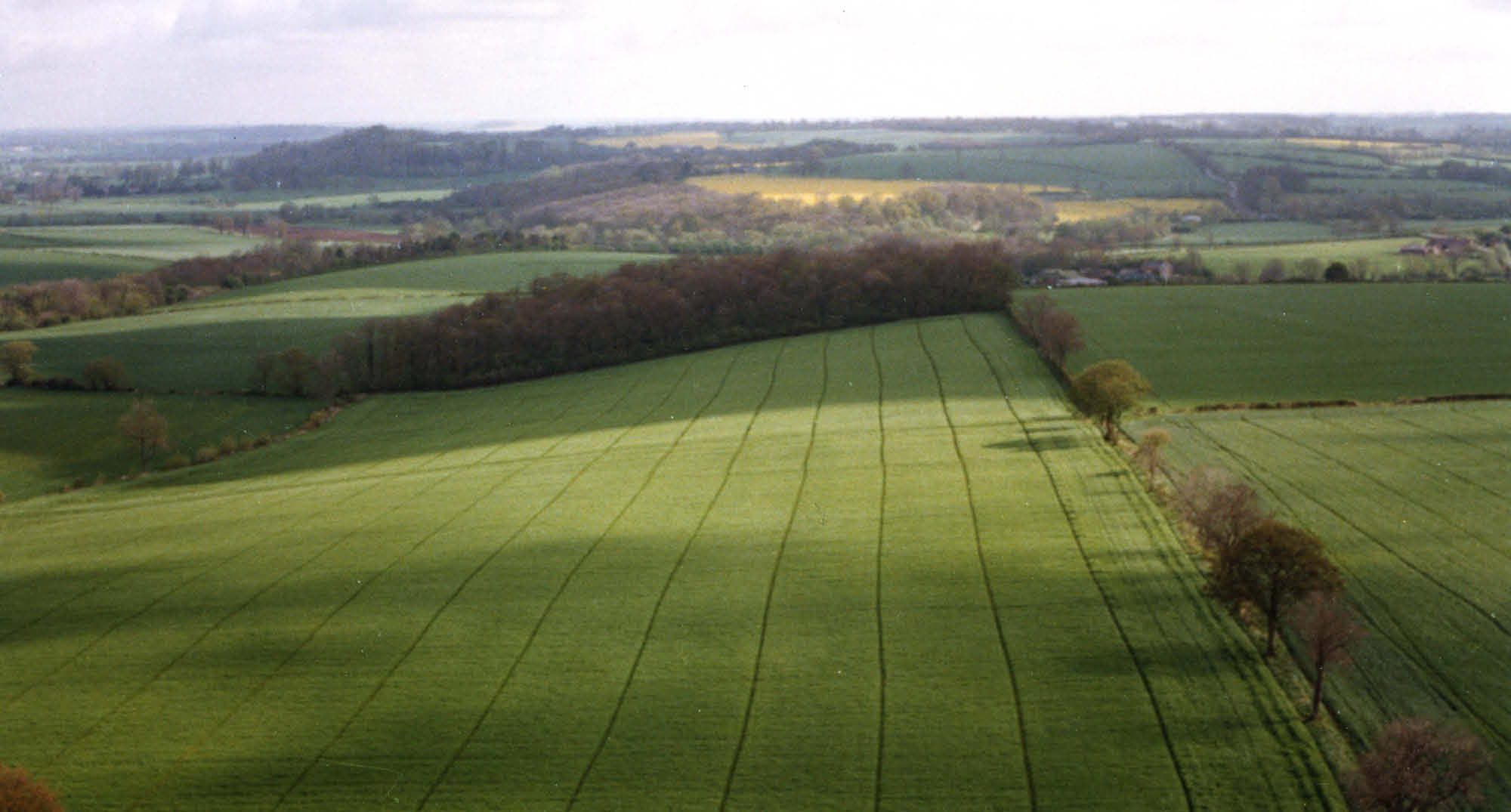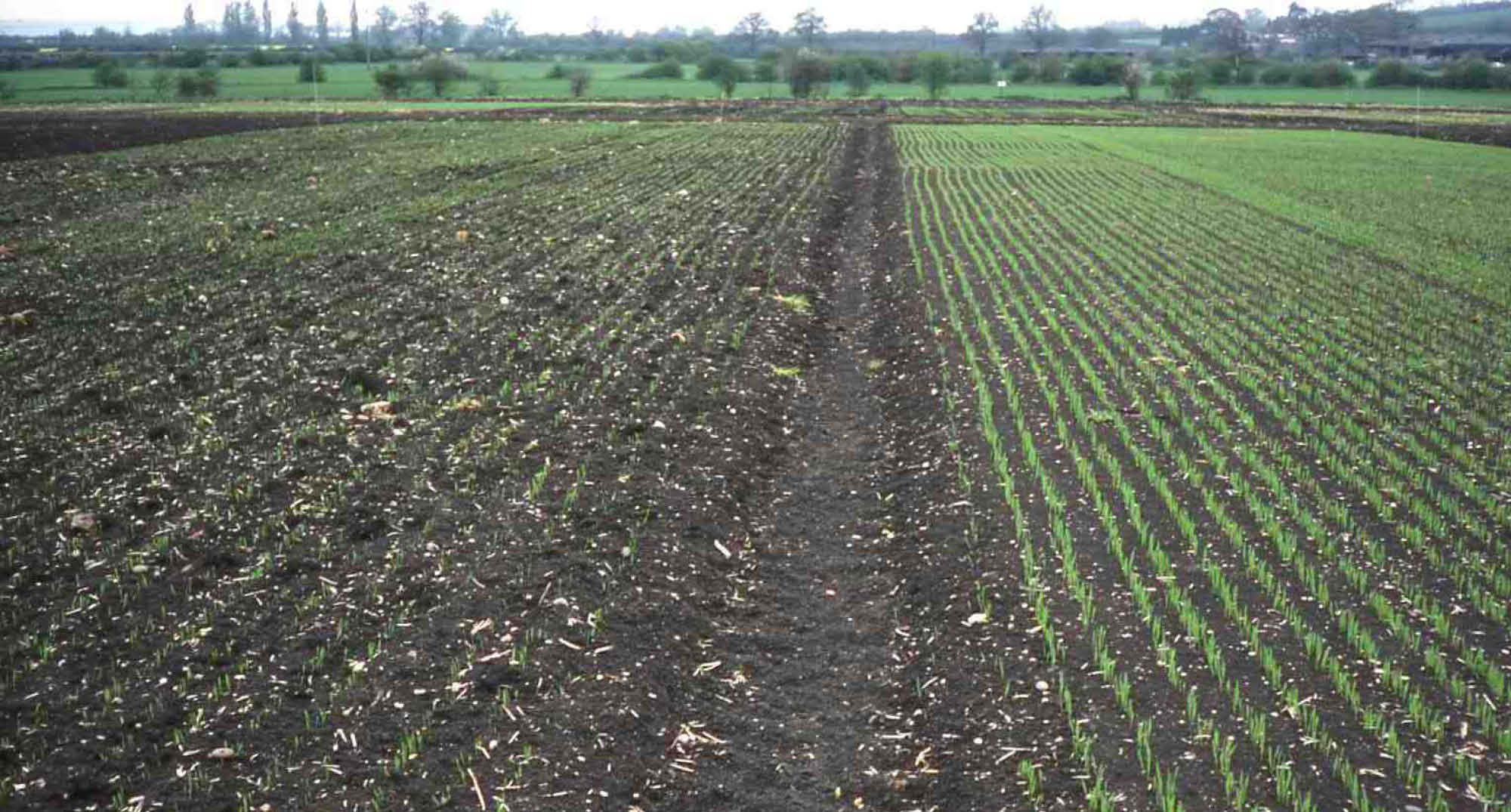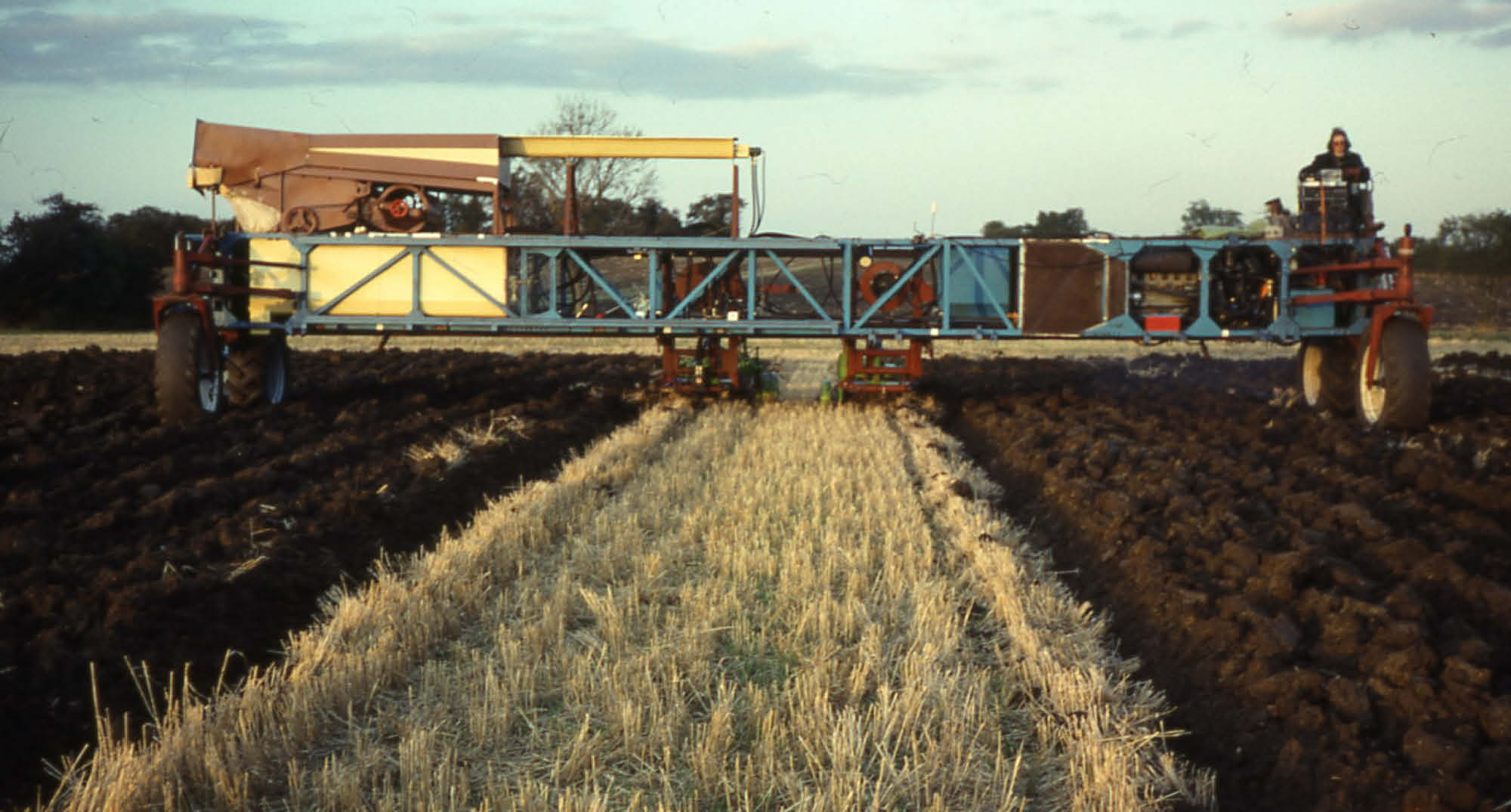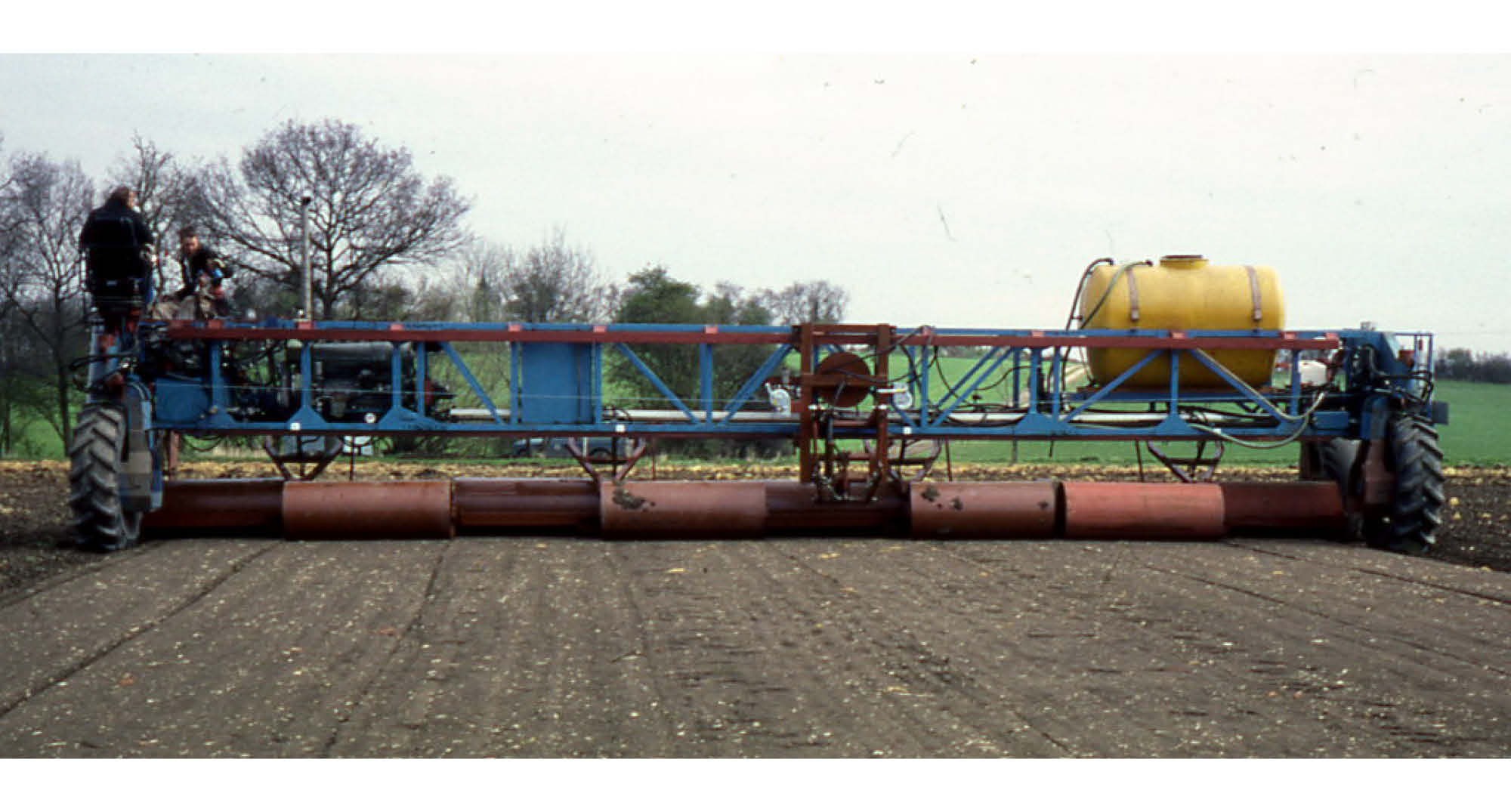Unlocking potentials: Advantages of Widespan Controlled Traffic Farming compared to standard CTF

Tim Chamen trained as an agricultural engineer and spent 25 years at Silsoe’s Institute of Ag. Engineering Research where he worked on tillage tool development and the effects of machinery compaction, the latter entailing development of an experimental 12 m gantry tractor for field-scale trials. Since leaving Silsoe in 1996, he has worked independently for both commercial and institutional bodies.

John McPhee worked as an agricultural engineer for 42 years in a range of industry sectors in Australia. A focus of his work was the interaction between mechanisation and soil management, with pioneering controlled traffic work for irrigated grain crops in the tropics of Queensland in the 1980s, and more than a decade focused on controlled traffic in annual vegetable production in Tasmania in the 2000s.
Read the findings of Tim Chamen and John McPhee on improving sustainability in agriculture here.
Both Tim Chamen and John McPhee are renowned researchers in the field of cropping systems, agricultural productivity, technology and sustainable farming.
In our blog they explore aspects such as crop productivity and input efficiency, the opportunities that widespan vehicles have to offer with regards to precision technology, but also potentials for sustainability improvements of farming.
The principal differences between standard and widespan controlled traffic (CTF) are associated with tracked areas, stability and precision application of inputs. Widespan tracked areas can be considerably less than half those of standard CTF systems, thus reducing energy inputs into the soil and emissions from it in terms of nitrous oxide and methane, both of which are pernicious greenhouse gases. Embedded energy in machinery production is likely to be less with widespan systems which employ fewer engines, transmissions and driver cabins. Enhanced stability associated with widespan and novel harvesting methods allows better row- and plant-scale precision and management and greater opportunities for strip intercropping. . Although initial investment in widespan systems is likely to be high, overall capital expenditure and operational costs will diminish considerably.
Figure 1. The field in the foreground had been cropped with maize for forage in the UK and in late April was still lying unrestored.
Controlled Traffic Farming (CTF) is a field machinery management practice which aims to address the problems caused by random tracking of heavy machinery, evidence of which can be seen in Figure 1. The caused damage has long-lasting implications, with fields being inaccessible for repair, and planting of spring crops being severely delayed. Subsoil damage can also be caused during “repair” if in-furrow ploughing is used.
CTF largely avoids this problem by confining all field traffic to the least possible area of permanent traffic lanes, kept in place by high-level satellite guidance and auto-steer. With the appropriate machinery, up to 95% of field areas can remain permanently traffic free.
In this article we contrast the means of achieving CTF on farms and their likely impact.
What is “Standard” and “Widespan” Controlled Traffic Farming (CTF)?
Standard CTF mostly uses existing commercial machinery to confine machinery wheels and/or tracks to between 12% and 30% of the cropped area. Traditional arable cropping tracks between 45% (no-till) and 85% of a field area per year (Kroulik et al., 2009) while horticultural systems often run over the same soil numerous times during a crop production cycle (Chamen et al., in press, a).
Widespan CTF refers to machinery that has a significantly wider track gauge than conventional tractors, meaning anything from 4 m upwards (Taylor, 1994). A key feature of widespan is that its implements normally (but not exclusively) operate within its track gauge. As a result, one pair of wheels run in their own track on the return journey, thus halving the tracking, as illustrated in Figure 2.

Figure 2. Example of how a widespan CTF system creates single rather than double wheel tracks on each pass. Photo: Dowler Engineering, c. 1989. Illustration: CTF Europa 2024.
Changing to a widespan system may seem daunting because it almost certainly involves a complete revision of a farm’s machinery. However, once the change is made, capital investment is likely to be less and operating costs significantly lower. It is a highly efficient and environmentally sensitive system that presently provides unsurpassable benefits both for the farmer and the consumer.
Advantages of widespan compared with standard controlled traffic
Tracking and crop yields
Because each wheel track is used twice, the tracking from widespan machines is at least halved compared with a standard system. For example, a standard 12 m CTF system, operating on 700 mm wide tyres would track around 12% of a field, but this is the best-case scenario when all track gauges are matched, something which is rarely possible due to the wide gauge of the combine harvester and European road legislation. In this situation, the “best case” scenario for a standard 12 m CTF system using a harvester on 580 mm wide rubber tracks and track gauge of 2.8 m together with a tractor on a 2.2 m gauge and 600 mm wide tyres, would be around 15%. In other parts of the world (Australia for example) where tractor and harvester gauges can be matched (at about 3 m), tracked area for a 12 m system would be around 10%. Comparable tracking for a widespan system would be around 6% and also less on headlands by virtue of its confined manoeuvres.
Widespan also means that there are fewer inconsistencies across the crop bed and more even crop growth (Figure 3).

Figure 3. Example of improved evenness of crop growth on non-trafficked (right) and conventionally trafficked soil (left). With tractor-based CTF, the cropped traffic lanes will exhibit slower and more patchy growth, as illustrated here on the trafficked soil. Evenness of crop growth is crucial to the efficiency of fertiliser and chemical use during the growing season.
In horticultural systems where the interaction of tracks, track gauges and crop row spacings can have a significant effect on plant populations, yields can be increased by up to 20% (Pedersen, 2015).
Stability and traction
The track gauge of widespan vehicles provides them with an inherent stability which is particularly valuable when considering the need for more precision. For example, roll movements of a spray boom are greatly magnified by the relatively narrow track gauge of standard equipment. Tractors operating with a 36 m boom could have a roll magnification at the boom tips of about 9, i.e., if one wheel of the tractor rises by 100 mm compared with the other, the end of the boom will rise by 900 mm. Such movements have a large influence on deposition rates (Langenakens et al.,1999) Although modern boom stabilisers help to negate these movements, they are rarely quick enough to fully compensate (Lipiński et al., 2022). The equivalent rise of a 36 m boom on a 12 m widespan machine would only be 300 mm – even a 60 m boom would only rise by 500 mm. Similar principles apply to wide platform combine harvesters.
Another stability feature of widespan machines is their ability to work with offset loads, such as may occur if a part-width operation is needed – particularly relevant for deeper high draught operations. In a similar context, widespan vehicles can also plough if needed (Figure 4) without compromising the non-trafficked bed, something that is virtually impossible on any scale with standard CTF equipment.

Figure 4. A 12 m 100 hp (75 kW) two-wheel drive widespan machine ploughing with two, two-furrow ploughs (one left- and one right-handed) on a 60% clay soil in the UK. Photo: Silsoe Research Institute, c. 1988. Photo: Silsoe Research Institute, c. 1988.
Another key advantage of widespan vehicles is the weight distribution on their driving wheels which on tractors are constantly varying between the front and rear, caused by mounted and/or trailed implements. Additional weights have to be added to the front axle to compensate for this, leading to a heavier vehicle than is sometimes necessary.
Overall, the enhanced stability and more appropriate weight distribution of widespan machines delivers numerous benefits, not least of which is enhanced row- and plant-scale precision for improved efficiency.
Energy and greenhouse gas emissions
It has been well established that CTF has the ability to reduce crop establishment energy inputs (and therefore carbon emissions) by up to 50% (Antille et al., 2019). These occur as a result of low or no tillage inputs and the running of wheels or tracks on firm traffic lanes. However, energy inputs will be proportionally less with widespan based on the difference in tracked areas, which is about 50% less, e.g. 7.4% with 10 m widespan and 16.9% with a standard 10 m system. This 9.5% reduction in tracked area with widespan also has an impact on soil emissions of nitrous oxide and methane which on non-trafficked soils can be just 40% of those from random traffic systems.
Additional factors associated with widespan machines are a reduction in manufacturing costs and emissions (Tullberg, 2014). Savings in implement cost and mass can be anticipated by virtue of multiple support points across the machine and less need for folding mechanisms. When used as a tool carrier (e.g. NEXAT), fewer engines and transmissions, tyres and cabins are required compared with standard systems, which in some machines (e.g. harvesters) can remain idle for 11 months of the year.
Soil impacts and nitrogen use efficiency
In this context, the contrasts between standard and widespan CTF are fewer but still significant. We know from over 50 years of research that avoiding soil compaction has significant benefits such as improved soil structure, porosity, water infiltration, drainage and nitrogen use efficiency (NUE) (Antille et al., 2019). NUE can be elevated by as much as 40% on non-trafficked soil, so widespan systems, by virtue of their lower tracked area, will have a greater benefit than standard CTF systems.
Similarly in vegetable production, extensive soil movement is often necessary and with widespan this can be achieved over a greater width with no impact on the cropped area, as is also the case for very precisely firming the soil if needed, as shown in Figure 5.

Figure 5. Example of how a 12 m wide two-wheel drive widespan machine with mounted rolls can be used to precisely firm the soil using hydraulic pressure and weight transfer from the vehicle. Photo: Silsoe Research Institute, c. 1990. Photo: Silsoe Research Institute, c. 1990.
Harvesting
Compared with standard CTF systems, widespan machines offer a new opportunity for harvesting operations which closely align with precision farming techniques. One of the key problems with wide conventional combine harvesters is their ability to spread residues evenly without incurring extra costs and energy use. NEXAT has addressed this problem by dividing the crop flow into two even streams across the width of the machine, thereby increasing separation area and residue spreading efficiency.
Monoculture, although adding efficiency through scales of operation, has the drawback of increasing the risk of pests and diseases and marginalising biological diversity in and above the soil. Compared with standard systems, widespan has greater potential to delineate wheel tracks and offer discrete row harvesting, allowing, for example, strip intercropping, whose benefits can largely only be achieved through close spacing of the contrasting crops (Glaze-Corcoran et al., 2020).
Gravity feed of agricultural materials
Standard CTF systems tend to employ wide implements to minimise tracked areas, but this means that solids (seeds, manures) have to be blown, pumped or thrown to achieve the spread width required. Widespan machines have some advantage in this respect because they can carry these materials across their full width. There is therefore the opportunity that seeds can be gravity fed to metering devices close to the ground, thus avoiding the seed spacing inaccuracies associated with pneumatic systems (Yatskul et al., 2017; Karayel et al., 2006).
Solid manures often have to be thrown to achieve a reasonable spread width and this tends to be inaccurate as well as costly in energy. Similarly, it may be possible with liquid manures to gravity feed these to injectors or dribble bars rather than pumping them. Injection with widespan will also be to a more consistent depth in the absence of any wheels, such that ammonia emissions are minimised.
Flexibility and capital investment
In the early stages of commercial development when widespan vehicles are not readily available, farmers may be nervous about relying on one prime vehicle for all operations on the farm. Suppliers must address this issue with 24/7 comprehensive support and quick vehicle replacement if immediate repair is not possible. As adoption increases, this shortcoming is very likely to diminish.
At NEXAT we estimate the capital investment cost of our holistic system to be 10-15% lower compared with equivalent standard technology. The main lever here is the efficiency in fleet; one vehicle provides the engine, cabin & other technology for all operations compared to several self-propelled vehicles all operating far from full capacity.
In addition to reduced capital expenditure widespan vehicles also reduce operational cost, by increasing fuel efficiency through minimizing slippage in compacted tramlines, which in turn improve trafficability as well as timeliness.
Literature
Antille, D.L., Chamen, W.C. T, Tullberg, J.N., Isbister, B., Jensen, T.A., Baillie, C.P., et al. (2019). Controlled traffic farming in precision agriculture. Chapter 10 from: Stafford, J. (Ed), Precision agriculture for sustainability, Burleigh Dodds Science Publishing, Cambridge, UK (ISBN: 978 1 78676 204 7
Chamen, W.C.T. & McPhee, J.E. (In Press, a). Controlled Traffic Farming in Horticultural Systems. In J. P. Newell Price, E. Sagoo & R. Robson-Williams. Precision in horticulture – The potential for agri-technology to facilitate innovation and drive value in outdoor fruit and vegetable production Springer Nature.
Chamen, W.C.T., McPhee, J.E., Pedersen, H.H. and Carter, L.M. (in press, b). Developments in controlled traffic farming (CTF) in precision agriculture. Chapter 13 from: Stafford, J. (Ed), Precision agriculture for sustainability, 2nd Edition, Burleigh Dodds Science Publishing, Cambridge, UK
Glaze-Corcoran, S., Hashemi, M., Sadeghpour, A., Jahanzad, E., Afshar, R.K., et al. (2022). Chapter Five – Understanding intercropping to improve agricultural resiliency and environmental sustainability. Advances in Agronomy, 162: 199-256.
Karayel, D., Wiesehoff, M., Özmerzi, A., Müller, J. (2006). Laboratory measurement of seed drill seed spacing and velocity of fall of seeds using high-speed camera system. Computers and Electronics in Agriculture, 50 (2): 89-96.
Kroulík, M., Kumhála, F., Hůla, J. and Honzík, I. (2009). The evaluation of agricultural machines field trafficking intensity for different soil tillage technologies. Soil and Tillage Research, 105 (1): 171–5. DOI:10.1016/j.still.2009.07.004.
Langenakens, J.J., Clijmans, L., Ramon, H. and De Baerdemaeker, J. (1999). The effects of vertical sprayer boom movements on the uniformity of spray distribution. Journal of Agricultural Engineering Research, 74 (3) 281-291.
Lipiński, A.J., Lipiński, S, Burg, P. and Sabotka, S.M. (2022). Influence of the instability of the field crop sprayer boom on the spraying uniformity. Journal of Agriculture and Food Research, 10 December 100432.
Pedersen, H.H. (2015) Evaluation of onion production in sandy soils by use of reduced tillage and controlled traffic farming with wide span tractors. Acta Technologica Agriculturae 18(3):74-82
Taylor, J.H. (1994). Development and benefits of vehicle gantries and controlled traffic systems. In: Soil Compaction in Crop Production, B.D. Soane and C. van Ouwerkerk, (Eds) Elsevier Science, B.V., Amsterdam, The Netherlands.
Tullberg, J.N. (2014). Chapter 3: Energy in crop production systems. In: Bundschuh, J., Chen, G. Sustainable Energy Solutions in Agriculture, Series: Sustainable Energy Developments No.: 8., pp. 53-76. London, U.K.: Taylor and Francis Group (CRC Press Balkema). ISSN: 2164-0645.
Yatskul, A., Lemiere, J-P., Cointault, F. (2017). Influence of the divider head functioning conditions and geometry on the seed’s distribution accuracy of the air-seeder. Biosystems Engineering, 61:120-134.
